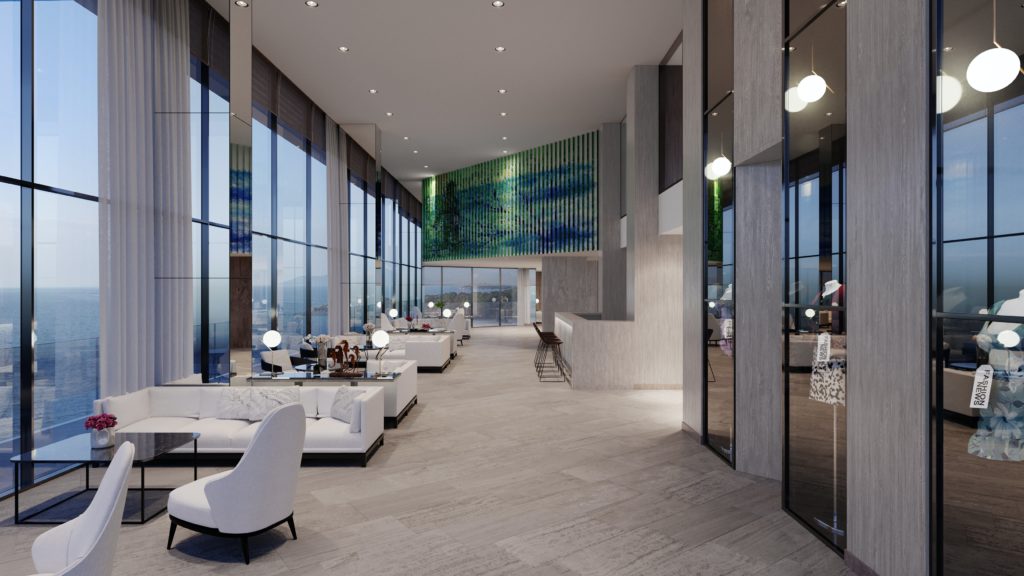
In the luxury residential sector, developers often focus on creating spaces that exude elegance and exclusivity. However, many of the high-end features marketed to appeal to the desire for convenience—such as seamless flooring transitions, wide corridors, and automated systems—are, in fact, cornerstones of accessible design. While accessibility isn’t always the focus, luxury developers often demonstrate what truly inclusive spaces could look like, even if unintentionally.
For example, at One Hyde Park, Nick Candy is known to have showcased the seamless flooring transitions by sliding his foot across a threshold, illustrating the smooth, uninterrupted flow between rooms. This feature, marketed as a sign of superlative craftsmanship, is a prime example of accessible design in action. It’s not just a luxury touch; it’s essential for individuals with mobility challenges, including wheelchair users or people with walking aids, as it eliminates tripping hazards and makes movement from one room to another effortless. What’s being praised for its elegance is, at its core, a feature of inclusive design that should be a standard in all homes.
In residential sectors, the developer who embraces this vision will not only create homes that are beautiful but also homes that outpace their competitors in the market. They’ll achieve a new level of luxury—one where function, elegance, and inclusivity merge to create a living space that works for all. This is where the true future of luxury lies: in homes designed to be lived in for a lifetime, without limitations.
Another feature seen in high-end homes is the integration of smart home technology, where everything from lighting and climate control to window blinds can be adjusted with a voice command or a tap on a smartphone. This technology is often marketed as the height of convenience for busy professionals, but its benefits go far beyond that. For individuals with disabilities—especially those with limited mobility or dexterity—smart home systems can offer a level of independence that would otherwise be difficult to achieve. Whether it’s adjusting the lights without having to get out of bed or setting the temperature without needing to reach a thermostat, or opening curtains without using manual strength, this technology enhances day-to-day living in ways that highlight the overlap between luxury and accessible design. These features showcase how luxury and accessible design often overlap, even if not always intentionally.
However, one of the major limitations of luxury design is that it often has a shelf life. The grand step entrance, while impressive, quickly becomes a challenge for families with pushchairs or for older residents as they age. Similarly, the stunning book-matched marble finishes don’t offer the kind of functionality required for residents to comfortably “age in place.” Luxury homes, though elegant, are often not designed to be “forever homes”—spaces that adapt to changing needs as residents age.
In contrast, a universal design approach ensures that homes remain functional and beautiful for the long term. By focusing on inclusivity from the outset, developers can create spaces that work for all stages of life, whether it’s a family with young children or individuals aging gracefully into their retirement. Universal design, unlike traditional luxury, provides a future-proof solution—one that remains timeless, adaptable, and truly luxurious for everyone.
At Direct Access, we have historically encouraged clients to consider accessibility from the outset. Examples of this within the GCC region includes the Diriyah Gate development and Expo 2020 Dubai (later Expo City), both of which were in their conceptual, embryonic periods when we were brought on to these respective projects. In Europe, we have consulted on the United Nations new headquarters in Geneva, and a variety of housing estates, student accommodations, and offices.
Master developers in the GCC region are taking the lead in embedding international accessibility standards into their residential building regulations—with a rigour that is not expected in the UK or the US. Their approach ensures that accessibility is not an afterthought but a fundamental part of new residential developments. This demonstrates how forward-thinking design can blend luxury with inclusivity, creating homes that cater to a wide range of needs. By integrating these standards so thoroughly, developers in the GCC are setting a new global benchmark for residential living, proving that truly luxurious homes are not only elegant but also adaptable and accessible to all. These homes are designed with the future in mind, ensuring longevity, comfort, and usability for every resident, regardless of their physical abilities.